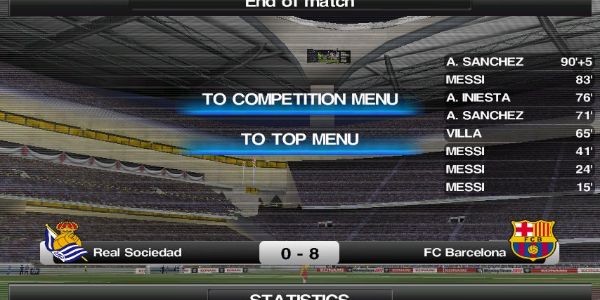As technology advances, the world of video games has witnessed significant transformations. One genre that has consistently captivated fans worldwide is soccer gaming. Over the years, numerous titles have graced our screens, each striving to provide players with a realistic and immersive experience. This blog post will take a trip down memory lane and compare Konami’s classic title, “Winning Eleven 2012”, with modern soccer games.
Graphics and Visuals:
One noticeable aspect when comparing older soccer games like Winning Eleven 2012 to their modern counterparts is the evolution in graphics quality. While Winning Eleven 2012 featured decent visuals at its release time, it pales compared to today’s standards. Modern soccer games boast stunning lifelike player models, detailed stadiums with dynamic weather effects, and breathtaking animations that add an extra layer of realism.
Gameplay Mechanics:
When it comes to gameplay mechanics, both old-school gamers and newcomers can appreciate how far the genre has come since Winning Eleven 2012 was released nearly a decade ago. The controls were relatively simple back then but lacked some intricacies in contemporary titles, such as advanced dribbling techniques or tactical nuances during matches.
In contrast, modern soccer games offer more refined gameplay experiences through improved ball physics systems that accurately factor in elements like momentum and weight distribution. Additionally, AI opponents now exhibit more brilliant decision-making abilities on offence and defence – making matches feel even more challenging yet rewarding for players seeking competitive thrills.
Modes & Features:
While Winning Eleven 2012 had various game modes available – including exhibition matches and leagues – they were limited compared to current releases within the genre.
Modern-day iterations often include expansive career modes where you can manage your team from top to bottom while delving into transfer markets or negotiating contracts—an added layer of depth absent in Winning Eleven 2012.
Furthermore, online multiplayer options have become a staple of modern soccer games. The ability to compete against friends or players from around the world adds an exciting social aspect and extends the longevity of these titles beyond their single-player campaigns.
Licensing:
One area where Winning Eleven 2012 struggled compared to its contemporary counterparts is licensing. While it featured some real teams and player names, many were unlicensed or had generic substitutes due to limited agreements with football associations at the time.
Modern soccer games now boast official licenses for various leagues, clubs, and individual players. This allows gamers to experience matches with accurate team kits, authentic stadiums, and realistic player likenesses—a significant improvement in immersion for fans seeking an exact representation of their favourite sport.
Conclusion:
The evolution between Winning Eleven 2012 and modern-day soccer games highlights how far this genre has come. From enhanced graphics and refined gameplay mechanics to expanded game modes and improved licensing deals – each new release strives to provide a more immersive experience than its predecessors.
While we can appreciate classic titles like Winning Eleven 2012 for paving the way towards what we enjoy today, there’s no denying that current releases offer unparalleled realism while capturing every nuance present on real-life pitches worldwide. So whether you’re a fan who grew up playing older soccer games or someone just discovering this beloved genre – get ready for an unforgettable gaming experience!








